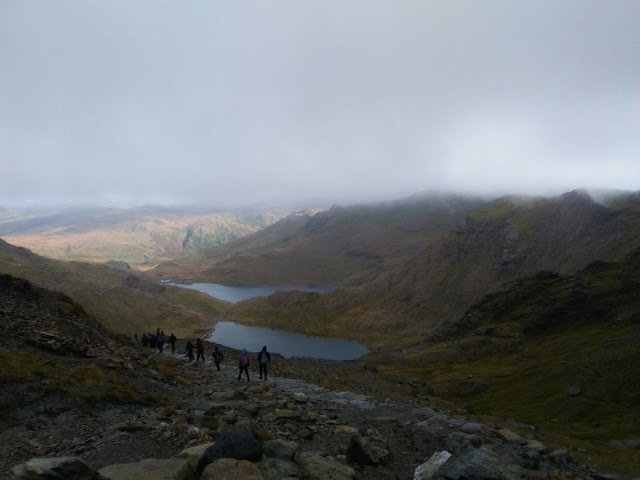South Campus, the oldest and most historic part of the campus, founded in
1795, originally home to St Patrick’s College Maynooth.
Not only
did he study, but he also explored the country, learned the language and
culture and had the experience of his lifetime. Wearing a typical flat cap for
the occasion, Santiago shared that experience with the students of year 3 ESO.
His new
university was in Maynooth (Maigh Nuad), 25 kilometres outside of Dublin, in
County Kildare. It’s a new university and next school year Maynooth celebrates its 25th anniversary.
Santiago is one of the more than 70,000 alumni across the globe that studied
there.
North Campus: John Paul II library
With over 100 clubs and societies to choose from, he certainly found
something to suit his taste. He joined the Aikido Club and the Rovers society,
which gave him the opportunity to travel and learn first-hand about this interesting
country.
Maynooth is also close to Kildare Town (Cill Dara, church of the oak), which was founded by St Brigid in the 5th century. St Brigid’s Day is celebrated on 1st February on the same day as Imbolc, which is a Gaelic seasonal festival to welcome the spring.
The reason is that Celtic festivals were replaced by
Christian festivities. In the same way, Samhain became Halloween. Samhain is a
Gaelic festival that marks the end of the harvest season. It begins at sunset on
31st October and ends at sunset on 1st November.
Likewise, the May Day festivity has its origin in Beltane, the Gaelic festival
that marks the beginning of summer.
Santiago
visited the capital of Ireland. The name of Dublin (Baile Átha Cliath) derives
from Dubhlind, dark pool, a tidal pool located where the River Poddle entered
the Liffey. Now it’s the place where the castle gardens are located.
Phoenix
Park is the largest city park in Europe and you can see herds of deer graze
freely.
Pubs are
very popular with a lively atmosphere and Santiago could relax with his mates
and enjoy live Irish music in his spare time. Local tradition claims that The
Brazen Head is the oldest pub. It is said that it opened in 1198.
Santiago also visited a suburb north of Dublin Bay, Howth (Binn Éadair), a
fishing village full of history and colour.
He went
hiking to Glendalough, in County Wicklow, the breath-taking glacial valley of
the two lakes, where he saw the remains of an important medieval monastery and
cathedral, the impressive ringed Celtic crosses, the Round Tower, which was the
Bell Tower used to summon the monks to prayer and where they took refuge (using
a movable ladder) when invaders attacked.
He travelled to Northern Ireland where he visited the capital Belfast ...
and the Giant’s Causeway in County Antrim, a nature reserve which is a World Heritage Site.
The spectacular basalt columns
caught his eye as he wondered how the volcanic eruption could have done such
impressive hexagonal shapes.
Then he made his way to the west coast but in the face of flooded local roads in the countryside he was forced to turn back and pay the toll motorway before visiting the imposing Cliffs of Moher at sunset and the complex ecosystem of the Burren.
Here he found pleasure in the huge variety of flora and fauna species. Over 20 orchid species can be found in this mosaic of habitats. This rocky area supports a vast number of lichen species and arctic-alpine plants live side by side with Mediterranean plants. Many species of birds breed in the area, which is also very rich in butterflies as well as mammals such as hares, foxes, hedgehogs, goats or bats.
Lough Leane
Nearby he got a glimpse of Carrauntoohil, the highest mountain in Ireland (1,038 m).
At last he went on a trip to Wales and Scotland. In Wales he visited the Snowdonia National Park.
In Scotland he visited Glasgow, the magnificent capital
Edinbugh and the traditional Highlands, where he met Nessy, the legendary
monster of Lochness.
Thank you Santiago for sharing your Erasmus experience. It really was worthwhile.
Slán!




















Amazing experience!! Thanks Santiago, we learnt a lot with you.
ResponderEliminarMaith thú a Santiago!
ResponderEliminar